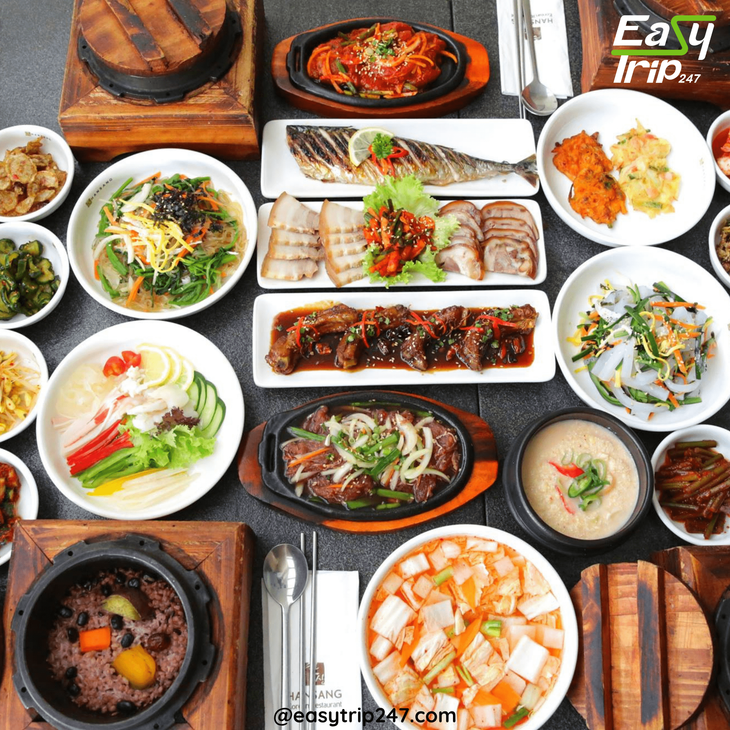What Are the Best Foods to Try in Vietnam?
On
23/06/2025Reading time:
1 min
Summary:
Vietnam is a food lover’s paradise—a tapestry of flavors woven with fragrant herbs, savory broths, and the delicate balance of sweet, sour, salty, and spicy. From bustling Hanoi street corners to the floating markets of the Mekong Delta, every dish tells a story, every bite reflects tradition, and every meal feels like a warm welcome.

Why Food and Timing Go Hand in Hand
Vietnamese cuisine is deeply tied to the seasons. Certain dishes shine brighter during specific months, when the ingredients are freshest, the weather is just right, and local traditions are in full swing. Whether you're sampling pho on a chilly Hanoi morning or sipping sugarcane juice under the southern sun, the best time to visit Vietnam can transform a good meal into a great memory.
Pho – A Bowl of Comfort
Let’s start with the iconic: pho. This beloved noodle soup made from beef or chicken broth, rice noodles, and fresh herbs is a staple you’ll find everywhere—from street vendors to upscale restaurants. While pho is enjoyed year-round, the best time to visit Vietnam for a steaming bowl of this goodness is during the cooler months, particularly in northern Vietnam from November to February. The misty, brisk mornings in Hanoi make every spoonful feel like a warm hug from the inside out.
Banh Mi – Vietnam’s Answer to the Sandwich
Crispy on the outside, soft on the inside, and bursting with flavors—banh mi is the perfect fusion of French and Vietnamese culinary heritage. Stuffed with meats, pickled vegetables, herbs, and spicy sauces, this portable delicacy is best enjoyed fresh from a street vendor. You’ll find great banh mi year-round, but the best time to visit Vietnam for indulging in this snack is during the dry season, when you can comfortably stroll the streets of Hoi An, Ho Chi Minh City, or Da Nang with a sandwich in hand and sunshine on your face.
Bun Cha – Smoky, Savory, and Unforgettable
Originating from Hanoi, bun cha features grilled pork patties and slices served with rice noodles, herbs, and a sweet-savory dipping sauce. It's a dish best eaten outdoors, where the smoke from charcoal grills perfumes the air. The best time to visit Vietnam for bun cha is late spring (April to May), when Hanoi’s streets are alive with blooming flowers and the weather is warm but not too hot. It’s also when locals begin to eat outdoors more often, making the experience feel authentic and immersive.
Cao Lau – The Taste of Hoi An
A specialty of the ancient town of Hoi An, cao lau is a noodle dish unlike any other. Made with chewy noodles, sliced pork, herbs, and crispy rice crackers, it’s said to be made only with water drawn from a secret well in Hoi An. Visiting during the best time to visit Vietnam—from February to April—lets you avoid the intense summer heat and heavy rains, so you can wander the lantern-lit streets and enjoy this regional gem under peaceful skies.
Goi Cuon – Fresh Spring Rolls Bursting with Life
When it’s hot and humid, nothing beats a plate of goi cuon (fresh spring rolls). Packed with shrimp, pork, vermicelli, and fresh greens, and wrapped in translucent rice paper, these rolls are the ultimate refresher. The best time to visit Vietnam for this dish is during the southern dry season, from December to April, when the air is lighter, and the Mekong Delta region is full of vibrant produce and herbs. It’s the kind of snack that’s both guilt-free and deeply satisfying.
Com Tam – Broken Rice with a Whole Lot of Flavor
Popular in southern Vietnam, especially Ho Chi Minh City, com tam is made with fractured rice grains and usually topped with grilled pork, egg, and pickled vegetables. It’s hearty, flavorful, and comforting. The best time to visit Vietnam for a plate of com tam is during Tet (Vietnamese Lunar New Year), which falls between late January and early February. This is when the streets are filled with festive energy, and every bite feels like a celebration.
Hu Tieu – A Southern Sensation
Hu tieu is a noodle soup known for its clear and light broth, common in the south, particularly in the Mekong Delta. It often features pork, shrimp, squid, and fresh herbs. The best time to visit Vietnam for this dish is from December to March, when the southern climate is dry, the floating markets are bustling, and ingredients are freshly harvested from the surrounding waterways.
Banh Xeo – The Crispy Sizzle of Vietnam
Banh xeo, or "sizzling pancake," is a crispy rice flour crepe filled with shrimp, pork, bean sprouts, and mung beans. It’s wrapped in lettuce and herbs, then dipped in nuoc cham. The best time to visit Vietnam to enjoy this street food masterpiece is in late spring or early autumn, when temperatures are ideal for open-air dining and night markets are full of life. It’s in these settings where banh xeo truly shines—accompanied by the sizzle of hot pans and laughter of locals.
Che – Sweet, Colorful Desserts
Che is an umbrella term for Vietnamese sweet soups and puddings, often made with beans, jellies, fruits, and coconut milk. While these desserts are enjoyed year-round, the best time to visit Vietnam for che is during the scorching summer months, from May to July, when cold versions offer relief from the heat. Try che ba mau (three-color dessert) or che chuoi (banana and coconut pudding) for a sweet finish to your culinary adventure.
Street Food Markets – A Feast for the Senses
No discussion of Vietnamese cuisine is complete without mentioning its vibrant street food culture. Cities like Hanoi, Hue, and Ho Chi Minh City transform into open-air kitchens at night. The best time to visit Vietnam to experience these markets is during dry months, when walking through alleys, sitting on tiny stools, and sampling local delicacies feels magical. Don’t miss out on grilled skewers, sticky rice dishes, and iced Vietnamese coffee served on sidewalks with a view of the ever-moving city.
Seasonal Specials – Eating with the Calendar
Certain dishes are tied to specific times of the year. During the Mid-Autumn Festival (usually in September), mooncakes filled with lotus paste and salted eggs take center stage. Around Tet, homes are filled with bánh chưng and bánh tét—sticky rice cakes wrapped in banana leaves. The best time to visit Vietnam for these specialties is aligned with their festivals, making your food journey even more meaningful.
Final Thoughts: Timing is the Secret Ingredient
Vietnam’s culinary offerings are vast, varied, and deeply regional. While every dish has its charm year-round, knowing the best time to visit Vietnam for food can significantly enhance your experience. Whether it’s biting into a warm bowl of pho in a chilly Hanoi morning, savoring tropical fruit in the Mekong Delta during the harvest, or enjoying seafood by the beach in Da Nang under clear blue skies—timing turns good food into unforgettable memories.
The best time to visit Vietnam for food lovers depends on what kind of flavors, experiences, and climates you crave. But one thing is certain: no matter when you go, Vietnam’s food will feed not just your stomach, but your soul.
Design Your Tour Today And Get A Quote. Contact Us Here: +84.975.504.825
Source: Easytrip247 Team compiled.
